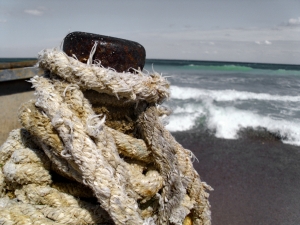Severe storms have torn through the Midwest, the South and the Northeast leaving debris and causing injury and death in some parts of the U.S. This storm season, it is important for workers to stay safe during clean-up efforts. As residents are working to rebuild after the storm, the Occupational Safety and Health Administration is urging workers, employers, and the public to be aware of potential post-storm hazards. As the agency reminds us, clean-up efforts should not result in additional emergency room visits or hospital stays.

According to OSHA, recovery efforts can expose workers to a range of hazards, including falls, electrocution, heavy machinery injuries, and even drowning. Our Boston workplace accident attorneys are dedicated to keeping workers safe and to preventing future accidents and injuries. Our firm is committed to raising awareness and teaming with OSHA to prevent additional injuries during post-storm clean-up efforts. For workers, job duties may involve demolition, debris clean-up, tree trimming, roadway and infrastructure repair, hazardous waste clean-up and emergency response. Here are some tips to help workers stay safe:
Employers should develop an emergency plan. Employers are responsible for ensuring worker safety during the storm. Workers should know an emergency evacuation or safety route in the event of a storm. Employers should also have an alarm system in place to warn of an emergency. This system should be tested frequently and alternative warnings should be available to employees with disabilities or for those who do not speak English.
Take protective measures. Workers should know what to do in the case of an emergency and should be prepared for clean-up hazards. During clean-up efforts workers should be aware of potential dangers, including slip and falls on dangerous walkways, falling objects or debris, electrical hazards, burns from power lines or equipment failure, exhaustion or heat and dehydration. Workers should assume that all power lines only experienced workers should handle repairs.
Be wary of contaminated water. After a storm, water can be contaminated with sewage and infectious bacteria. Workers should be wary about coming into contact with contaminated flood waters and wear protective boots with steel toes and insole. They should also wear protective body suits, rubber gloves and safety goggles when working in flood waters. Gear should be as watertight as possible to prevent exposure.
Airborne and inhalation hazard prevention. In addition to contaminated waters, mold and other airborne hazards can pose dangers after a storm. When working in flood or storm damaged buildings, workers should wear masks and protect skin, eyes, and nose from irritation. Floods and storms can also loosen asbestos and other airborne hazards so workers may need additional protection to prevent exposure.
Only trained workers with training should conduct clean-up activities. Those who are trained and involved in clean-up activities should be able to evaluate all areas for hazards, employ skills to mitigate hazards and use personal protective equipment. Workers should know how to use portable generators, saws, ladders, vehicles and other necessary equipment before participating in clean up.
Call Jeffrey Glassman Injury Lawyers for a free and confidential appointment — (617) 777-7777.
More Blog Entries:
Addressing Nail Gun Safety to Protect Boston Workers, January 22, 2014.
OSHA Moves Forward with Power Line Standard Update, January 25, 2014.
 Massachusetts Workers Compensation Lawyers Blog
Massachusetts Workers Compensation Lawyers Blog

